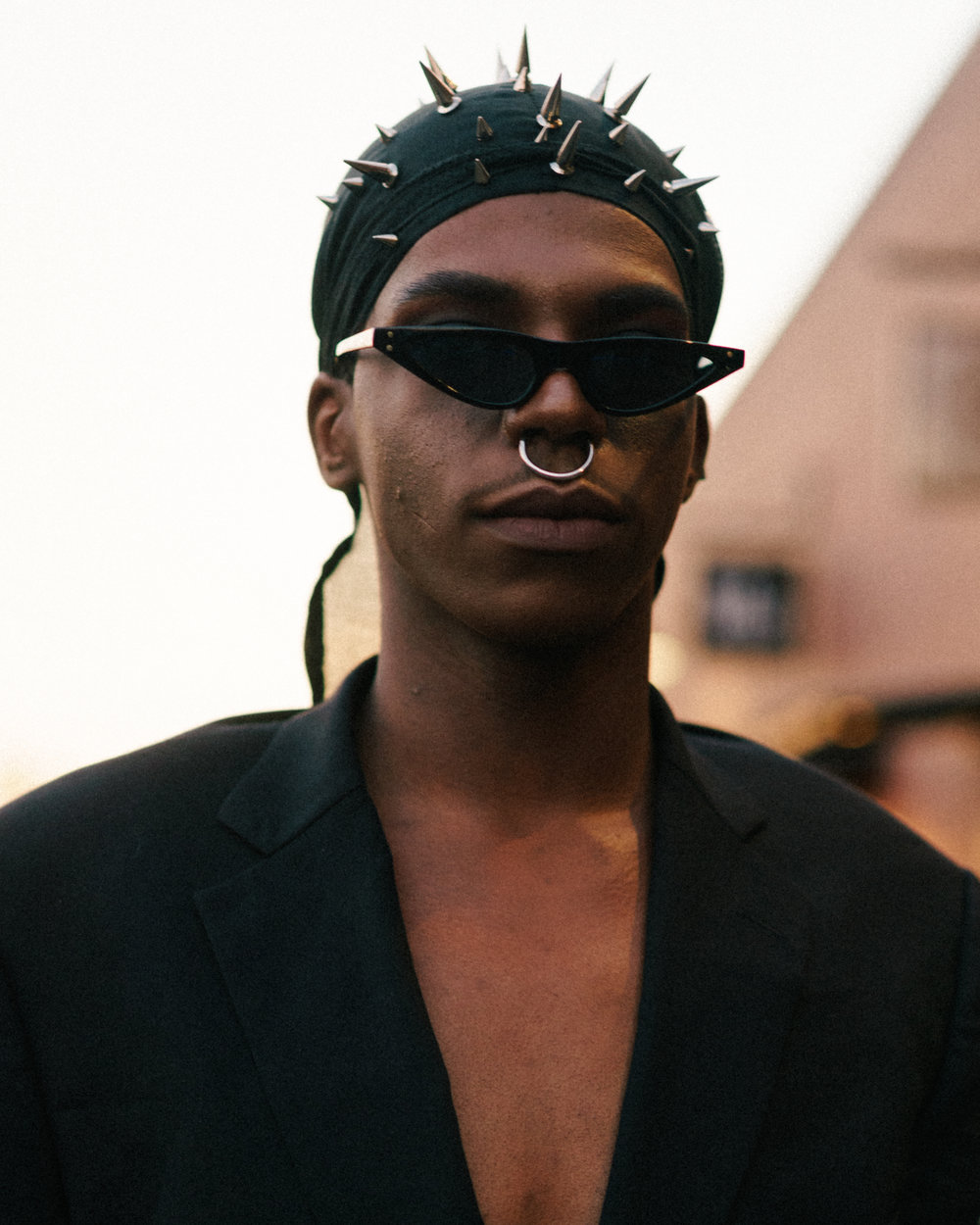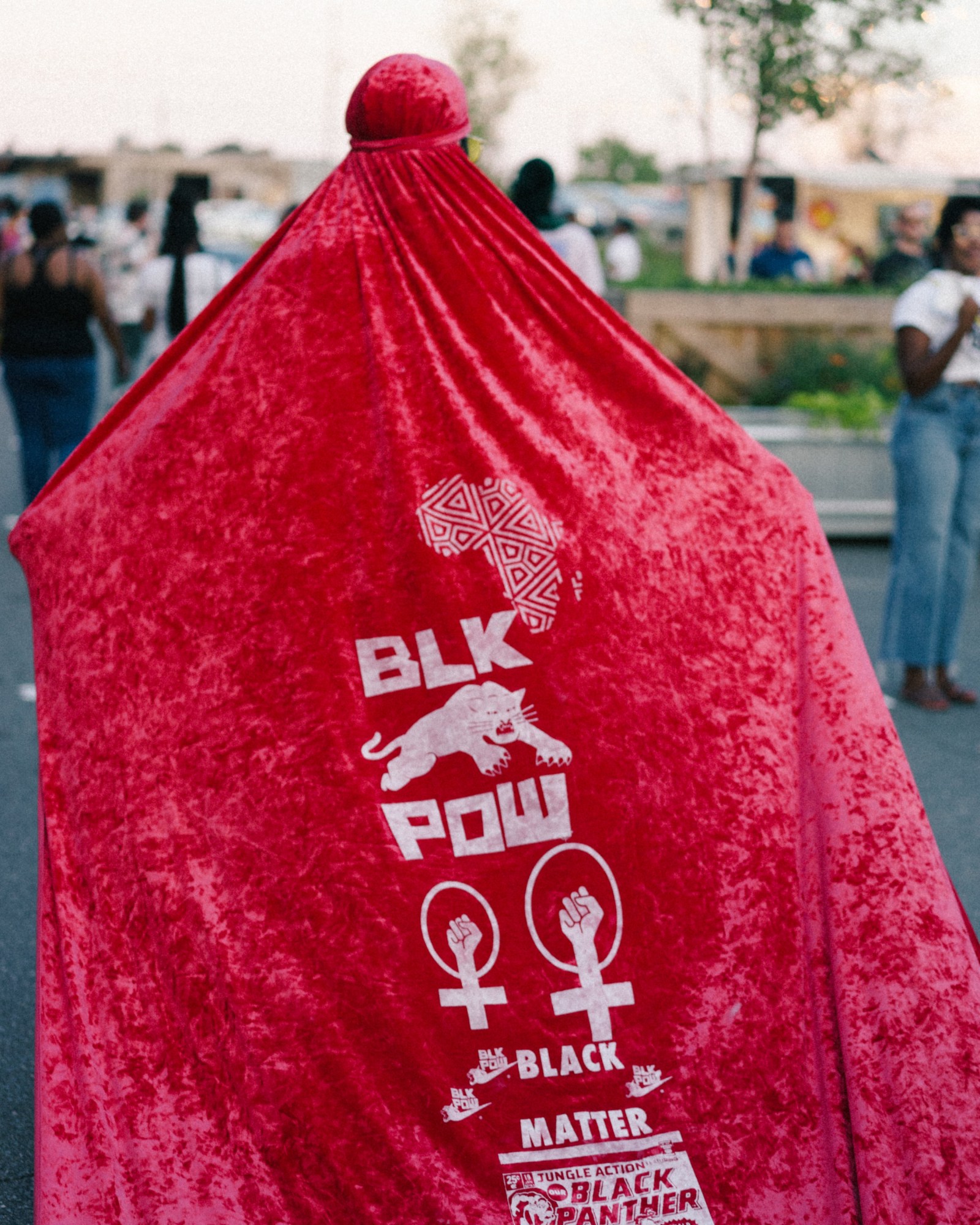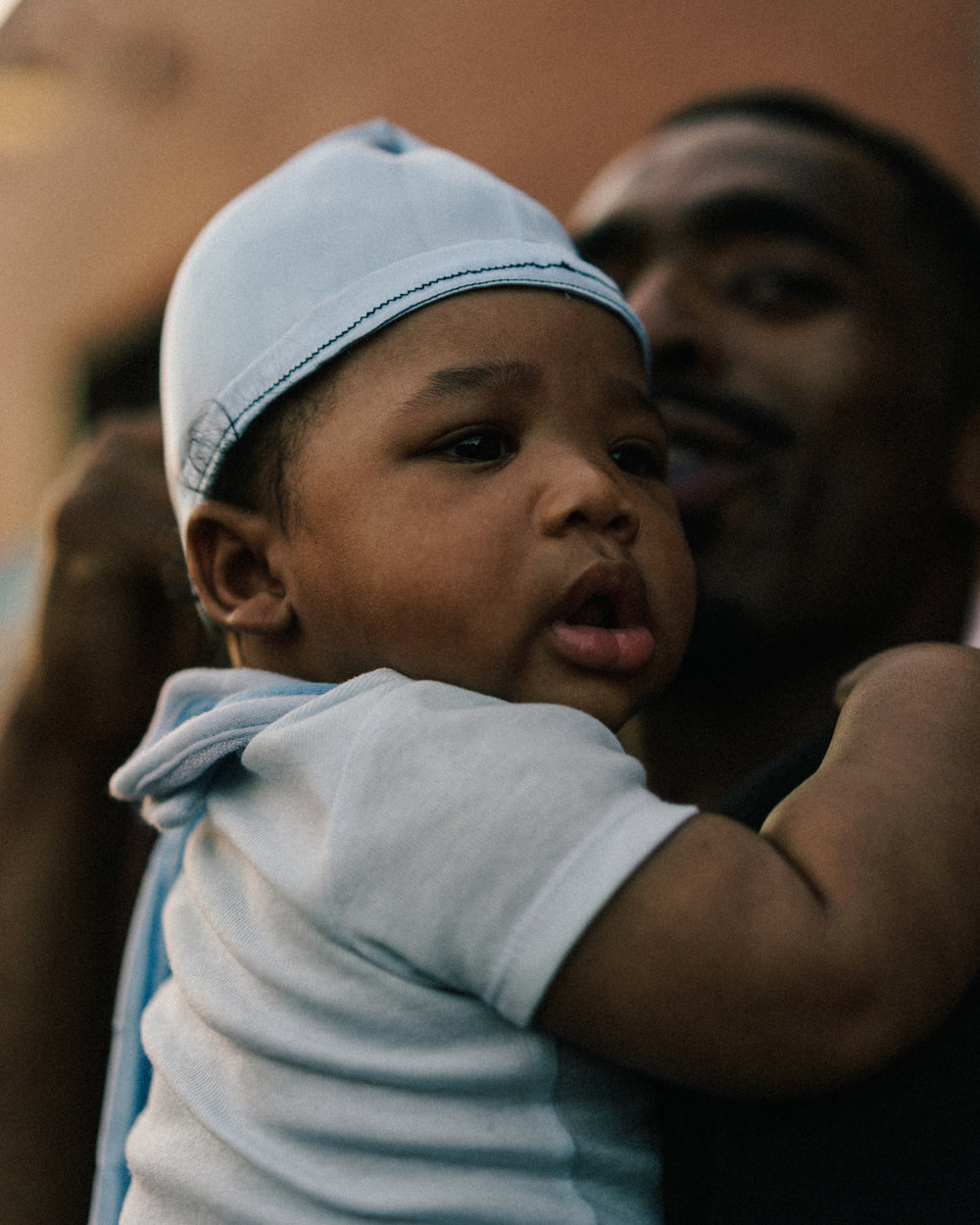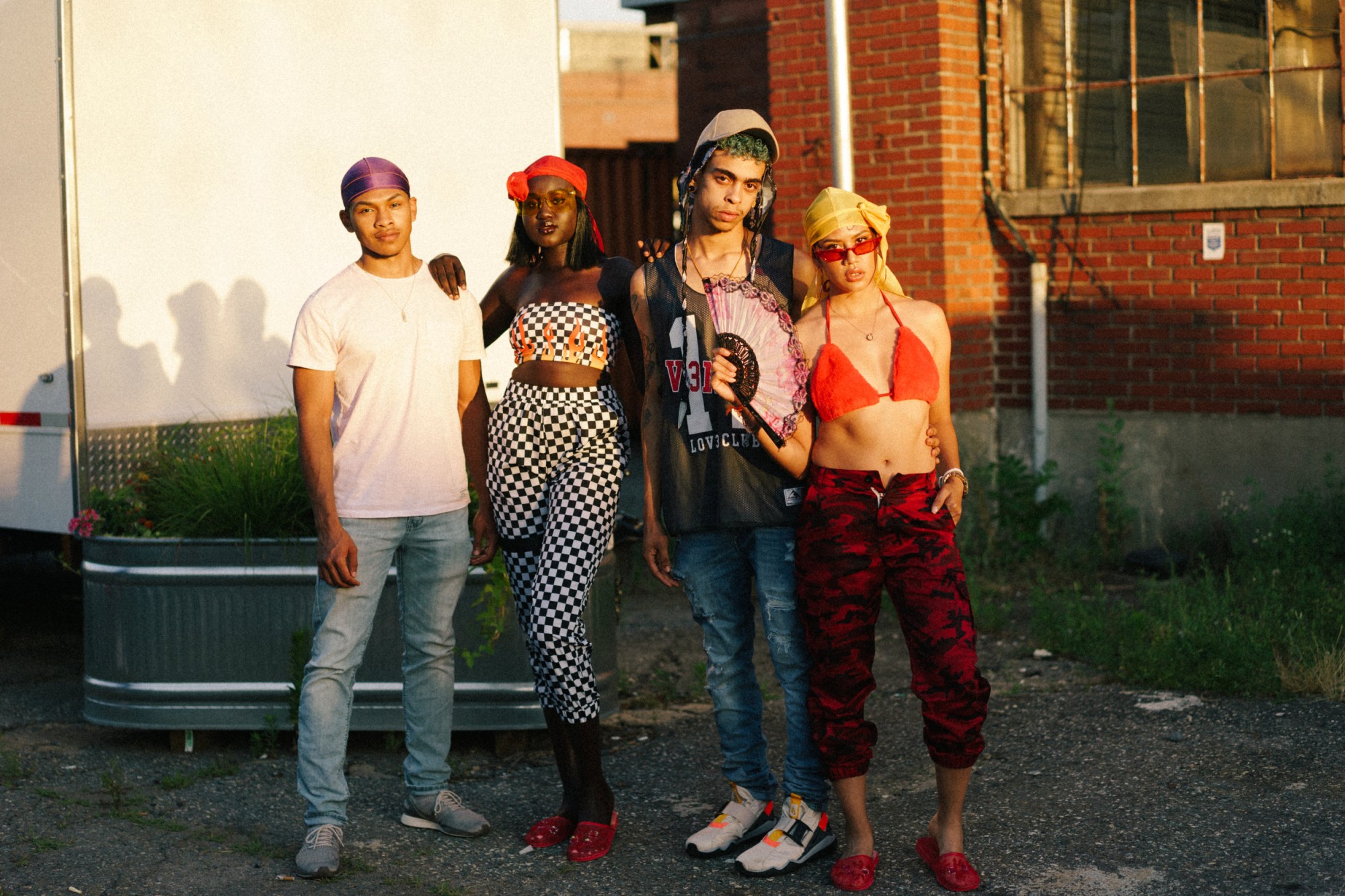Charlotte-based artist Dammit Wesley believes you can tell a lot about a man by the way he wears his durag. There are the men that tie a full knot to the side, the ones that tie it with the flap in and others with the flap out, and then there are the men who don’t tie it at all and instead let the ties float next to their ears — these men have commitment issues, according to Wesley. Wesley’s expertise on the art of durag tying comes from his experience growing up as a black man, around other black men, who religiously wore durags to either maintain their hair waves or protect a fresh haircut. Last year, Wesley’s relationship with the headscarf developed beyond its superficial origins when he, along with his business partner Lica Mishelle, decided to organize the world’s first Durag Fest in their hometown of Charlotte, North Carolina.
The inaugural Durag Festival was held last June at a parking lot in Camp North End, a Charlotte neighborhood with an emerging artistic community. The festival had food, art, musical performances by local artists, and an overall spirit of camaraderie that provided an exciting new energy that Wesley believed was missing for black people in the city. It was attended by over 1,200 people who each showed up wearing durags of different textures, colors, and lengths. Some attendees choose to stick with classic durag styles, while others took the DIY approach and designed durags with metallic spikes poking out the top or fur fabrics. Following its success, the duo hosted another durag themed event, with its inaugural Durag Ball that aspired to be the “Met Gala of durags.”

Mishelle, who serves as the festival’s CEO/director of operations and Wesley, who serves as its creative director, curated the festival around not just the idea of durags as a grooming accessory, but as a cultural staple that was first and foremost a style that black people have complete ownership of, and happily embrace despite the negative stereotypes others have attributed to it. Not only did they want to celebrate its cultural significance and rebrand it, they also wanted to find a fun, creative, and positive way to celebrate Juneteenth, the American holiday on June 19 that commemorates the day that the last enslaved Africans were freed from bondage following the 1866 abolition of slavery in the US.
i-D spoke with Durag Festival founders Dammit Wesley and Lica Mishelle over the phone to discuss the origins of the Festival and what people have to look forward to this year.
What was the experience like at the inaugural Durag Fest?
Dammit Wesley: I can honestly say it was probably like my first time being in the city of Charlotte where I felt like people could just be as loud and unapologetically black as they wanted to be. It legitimately felt like Wakanda. Everything was so bold and loud and bright. Everybody was so friendly to the sound of trap music in the background. I think the real milestone for me is that the event had gone beyond durags in a parking lot. When we told everyone they could go home, we shut the music off and people just stayed to clean. They were like, “you need help taking out this trash,” “what do you need,” “someone find me a broom.” People were so invested in the event that it was no longer ours it was theirs.
Why did you choose to center the festival around durags?
DM: Being able to take something so simple and elevate it into art is a talent that black people have always had since we got off that boat and ended up here. Whether it’s like turning the unused parts of pork into a full meal or being able to hide martial arts in the form of dance and emancipating yourself from plantations in a place like Brazil. We’ve always been able to make more out of very little. Something as small and insignificant as a head wrap used to keep your waves tight means so much more and has so much more influence than what people give it credit for. And that’s just shining a light on us as a people and our ingenuity and creativity in general.

What is the importance of durags in black culture?
Lica Mishelle: For me, most importantly, it’s all about reclaiming or taking back our narrative because the durag has been kind of demonized, and really with anything in black culture, it has been taken, flipped, and twisted to mean something that it never was. Durags are something that we use to protect our hair, to make our hair look nice, and to take pride in how we look, and being able to make a festival where we embrace that and we hold that up almost on a pedestal that it’s okay to embrace who we are and to take pride in that. It’s just taking back another part of our culture and being able to say this is what it is about and this is how you’re going to respect it.
What do durags symbolize to you?
DM: I’ve always viewed the durag as a symbol. It kind of acts like a vehicle for the black experience in my eyes. A durag is one of the things that’s so undeniably black that no matter who you see it on or how hard people try to appropriate it, you automatically know that it was meant for one very specific culture. We can’t say the intent to appropriate them has not been there, and every time the attempt happens we laugh and joke about it because everybody obviously knows the durag is only built specifically for black people or people of certain hair texture. For me, that’s just sort of like the analogy or the allegory of the black experience. Simple, elegant, purposeful, but at the same time demonized, scrutinized, and misunderstood. That’s the durag, that’s the plight of black hair, that’s the plight of black people.
What were some of the best durags you saw last year?
LM: I won’t forget the grunge gothic durag with the spikes. They had a whole crew together and I just couldn’t get over how they got the spikes through the durag and it was still sitting right. Even from the ball, I know a friend of ours had a whole fur durag. Once you see everybody go all out, as the creators you’re like, damn I need to have a bomb durag. I’m trying to think of a way to be creative while planning this.
Can you explain more about your second durag event, the Durag Ball?
DM: For the ball we wanted to play up on that idea in our tagline of being the Met Gala of durags. It’s a more curated visual experience. Definitely less people, but it’s more of an opportunity for you to invest yourself fully in the exhibition and the artwork that is a durag culture that already exist.

What is the proper way to tie a durag?
DM: I wouldn’t say there is a proper way to tie a durag. Durags are used to compliment a black man’s confidence and you can usually tell the type of dude you getting ready to deal with just by how he wears his durags. The guys that don’t tie their durags and they just let them sit off the top of their head he doesn’t care, he’s not committed. The guys that wear their durags tied in a full knot to the side, the left or the right, those are the wild cards. Those would be like the DMX type of dude. So if you like them real thuggy and aggressive go with that. Flap in, that’s an older brother. He’s mature, he might have 1-2 kids on the side that you don’t know about. If he has a cigarette stuffed in the side where the flap is tied in, definitely an old man. He probably has pension or SSI checks coming in. If it’s tied neatly with the flap out then he has somewhere to go and he’s trying to stunt, that man has some purpose. Now, he may not be faithful, but we know he has some purpose in his life.
Where do you see Durag festival going in the future?
LM: I know for sure I’m looking for this to be an annual thing. This is the start of history, of a full on black festival. We talked about expanding to different cities. We don’t know when that’s going to happen but I know right now for us it’s really about building on what we have and just allowing the people to let it grow organically. We want to put everything into connecting it to Juneteenth and what it’s really about, emancipating ourselves and really using art to do that.

